Weihnachtsinsel |
|
|
|
| Übersicht – Contents: | |
Diese Seite ist Teil des Projektes
Weihnachtsinsel |
|
|
|
| Übersicht – Contents: | |
Flagge – Flag: |
|
 |
seit/since 2002, Nationalflagge – national flag, Seitenverhältnis – ratio = 1:2, Quelle/Source, nach/by: Flags of the World |
historische Flaggen – historical Flags: |
|
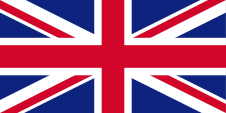 |
1888–1942, Union Flag → quasi Nationalflagge, |
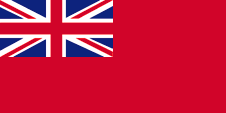 |
1888–1942, 1945–1958, |
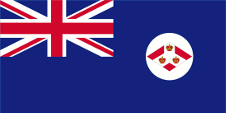 |
1888–1904, Straits Settlements, Flagge der Regierung (Staatsflagge) – flag of the government (state flag), Seitenverhältnis – ratio = 1:2, Quelle/Source, nach/by: Flags of the World   |
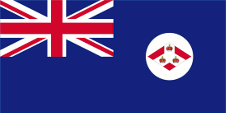 |
1904–1925, Straits Settlements, Flagge der Regierung (Staatsflagge) – flag of the government (state flag), Seitenverhältnis – ratio = 1:2, Quelle/Source, nach/by: Flags of the World   |
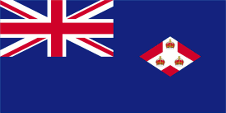 |
1925–1942, Straits Settlements, Flagge der Regierung (Staatsflagge) – flag of the government (state flag), Seitenverhältnis – ratio = 1:2, Quelle/Source, nach/by: Flags of the World   |
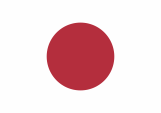 |
1942–1945, Nationalflagge Japans – national flag of Japan, Seitenverhältnis – ratio = 7:10, Quelle/Source, nach/by: Wikipedia (EN) |
 |
1945–1958, |
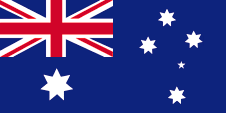 |
1958–2002, Nationalflagge von Australien – national flag of Australia, Seitenverhältnis – ratio = 1:2, Quelle/Source nach/by: Flags of the World   |
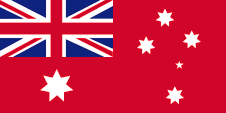 |
1958–2002, Handelsflagge von Australien – merchant flag of Australia, Seitenverhältnis – ratio = 1:2, Quelle/Source, nach/by: Flags of the World |
 |
1986–2002, inoffizielle Flagge – unofficial flag, Seitenverhältnis – ratio = 1:2, Quelle/Source, nach/by: Flags of the World |
|
Die heutige Flagge der Weihnachtsinsel wurde bereits am 14.04.1986
eingeführt, jedoch hatte sie nur inoffiziellen Charakter. Am 26.02.2002
wurde sie offiziell, und darf als Nationalflagge verwendet werden. Die
Flagge ist von rechts oben nach links unten diagonal zwischen einem oberen
grünen Feld und einem unteren blauen Feld geteilt. Im grünen Feld die
Silhouette eines fliegenden Weißschwanz–Tropikvogels, nach anderen Quellen
ist es ein Goldener Bosun. Beide Arten sollen nur auf dieser Insel
vorkommen. Im blauen Feld das Kreuz des Südens, gebildet aus weißen Sternen.
In der Mitte der Flagge eine gelbe Scheibe mit der Silhouette der Insel. Die
Farben Blau und Grün stehen für das Meer und die Vegetation. Die Farben Gelb
und Grün sind die Nationalfarben von Australien. Ebenso verweist das Kreuz
des Südens auf die Verbindungen zu diesem Land, ein Detail, das 1:1 aus der
Flagge Australiens übernommen wurde. Die Farbtöne der Flagge scheinen
definiert zu sein, und zwar, wie Australien, dem britischen Farbsystem
folgend: Grün = Pantone 364 C, Blau = Pantone 280 C und Gelb = Pantone 116
C. Die Weihnachtsinsel gehörte ab 1888 zur britischen Kronkolonie der
Straits Settlements. Im Jahre 1867 wurden die Straits Settlements eine
britische Kronkolonie. Für diese wurde eine Flagge eingeführt, wie sie
damals in britischen Kolonien üblich war. Großbritannien hatte in Jahr 1864 ein Flaggensystem eingeführt, in dem: • Kriegsschiffe einen sogenannten "White Ensign" (Marineflagge), eine weiße Flagge oft mit durchgehendem roten Georgskreuz und mit dem Union Jack in der Oberecke, • Handelsschiffe einen "Red Ensign" (auch "Civil Ensign" → Bürgerflagge genannt, die eigentl. Handelsflagge), eine rote Flagge mit dem Union Jack in der Oberecke, und • Dienstschiffe einen "Blue Ensign" (Regierungsflagge → die eigentl. Staatsflagge), eine blaue Flagge mit dem Union Jack in der Oberecke führten. Seit 1865 durften Schiffe von Kolonialregierungen einen Blue Ensign mit einem Badge (Abzeichen) im fliegenden Ende führen. Das Badge der Straits Settlements war ein roter Rhombus mit einer weißen Deichsel, auf die drei Kronen aufgelegt waren. Diese standen für die drei Besitzungen Pinang, Malakka und Singapur. In der Zeit der japanischen Besetzung (1942–1945) wurde die Flagge Japans verwendet. Nach Auflösung der Straits Settlements verblieb die Insel in britischem Besitz, und es wurde der Union Jack verwendet. Die Verwaltung der Weihnachtsinsel ging am 01.10.1958 auf Australien über, und auf der Insel wurden bis 2002 offiziell nur die Flaggen Australiens verwendet. |
The today's flag of Christmas Island was introduced on 14th of April in
1986, but was only of an unofficial nature. It became official on 26th of
February in 2002 and may be used as the national flag. The flag is divided
diagonally from top right to bottom left between an upper green field and a
lower blue field. In the green field is the silhouette of a flying
White-tailed Tropicbird, according to other sources it is a Golden Bosun.
Both species are said to occur only on this island. In the blue field is the
Southern Cross, formed from white stars. In the centre of the flag is a
yellow disc with the silhouette of the island. The colours blue and green
represent the sea and vegetation. The colours yellow and green are the
national colours of Australia. The Southern Cross also refers to the ties to
this country, a detail taken 1:1 from the Australian flag. The colours of
the flag appear to be defined and, like Australia, follow the British colour
system: green = Pantone 364 C, blue = Pantone 280 C and yellow = Pantone 116
C. Christmas Island was part of the British Crown Colony of the Straits
Settlements from 1888. The Straits Settlements became a British Crown Colony
in 1867. A flag was introduced for them, as was customary in British
colonies at the time. United Kingdom introduced a flag system in 1864 in which: • war ships fly the "White Ensign" (naval flag), a white flag often with an uninterrupted red St. George's-Cross and with the Union Jack in the upper staff quadrant of the flag, • merchant ships fly a "Red Ensign" (also named "Civil Ensign" → civil flag, the real merchant flag), a red flag with the Union Jack in the upper staff quadrant of the flag, and • governmental ships fly the "Blue Ensign" (flag for the use by the gouvernment → the actual state flag), a blue flag with the Union Jack in the upper staff quadrant of the flag. From 1865, ships of colonial governments were allowed to fly a Blue Ensign with a badge in the flying end. The badge of the Straits Settlements was a red rhombus with a white tiller on which three crowns were placed. These stood for the three possessions of Pinang, Malacca and Singapore. During the Japanese occupation (1942–1945), the flag of Japan was used. After the dissolution of the Straits Settlements, the island remained in British hands and the Union Jack was used. The administration of Christmas Island was transferred to Australia on 1st of October in 1958, and only the Australian flags were officially used on the island until 2002. |
| Quelle/Source: Die Welt der Flaggen, Flags of the World, Volker Preuß | |
Landkarte – Map: |
Lage – Position: |
Landkarte des Landes – Map of the Country: |
| Die
Weihnachtsinsel als Teil der Straits Settelements – Christmas Island as part of the Straits Settelements: |
|
|
|
| Zahlen und Fakten – Numbers and Facts: | |
|
|
|
|
|
|
|
|
|
|
|
|
|
|
|
|
|
|
|
25.12.1643
· der englische Seefahrer William Mynors entdeckt die Weihnachtsinsel 1688 · der englische Seefahrer William Dampier besucht die Weihnachtsinsel 1888 · die Weihnachstinsel wird von Großbritannien in Besitz genommen und den Straits Settlements angegliedert 1889 · Besiedlung, Phosphatabbau 1942–1945 · die Weihnachtsinsel ist im Zweiten Weltkrieg durch japanische Truppen besetzt 01.04.1946 · das Ende der Straits Settlements: Pinang und Malakka werden der Malaiischen Union (Malaya) angeschlossen, Singapur wird eine eigene britische Kronkolonie, die Kokosinseln und die Weihnachtsinsel verbleiben ebenfalls in britischem Besitz, Labuan kommt an Britisch-Nordborneo 01.10.1958 · die Verwaltung der Weihnachtsinsel geht auf Australien über |
|
25th of December 1643 · the English seafarer William Mynors
discovers Christmas Island 1688 · the English seafarer William Dampier visits Christmas Island 1888 · Christmas Island becomes appropriated by United Kingdom and affiliated to the Straits Settlements 1889 · settlement, phosphate mining 1942–1945 · Christmas Island is occupied by Japanese troops during the Second World War 1st of April 1946 · the end of the Straits Settlements: Penang and Malacca become affiliated to the Malay Union (Malaya), but Singapore becomes an own British crown colony, the Cocos Islands and Christmas Island remain as a British possession, Labuan comes to British North Borneo 1st of October 1958 · the administration of Christmas Island becomes transfered to Australia |
| Quelle/Source: Wikipedia (EN), World Statesmen |
| Der Name "Weihnachtsinsel" erinnert daran, dass Kapitän William Mynors die Insel am Weihnachtsabend des Jahres 1643 entdeckte. | The name "Christmas Island" remembers that Captain William Mynors discovered the island on the christmas-eve in 1643. |
| Quelle/Source: Wikipedia (EN) | |